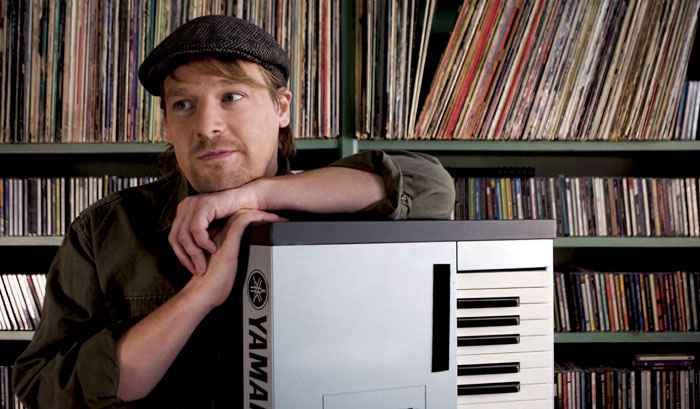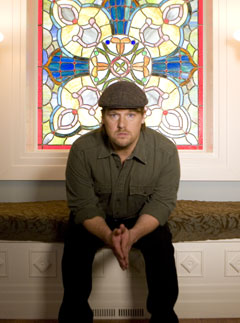


THERE ARE MANY PATHS TO MAINSTREAM musical success, but Jonathan Hamby chose one of the less-traveled ones: He prepared for his current session and touring career by earning a Masters Degree in classical piano performance.
Those years spent polishing preludes and sharpening sonatas as a scholarship student at Nashville's Belmont University inform Hamby's keyboard style, even when he's working with such decidedly non-classical artists as Amy Grant, Owsley, Will Hogue, Peter Cetera, Eric Heatherly, and most recently, Carrie Underwood.

"That background definitely influences my playing," says Jonathan. "On the other hand, I was playing by ear from a young age. I've always had that dual approach to things." In fact, Hamby seems to view the "pop vs. classical" divide with some skepticism: "Classical music is usually written out note-for-note, while popular music is played more by ear. But good classical musicians tend to have good ears too."
Naturally, Hamby is a fluent music reader, though he's not always called upon to exercise the skill. More often he relies on charts that use the "number system," Nashville's unique chord notation format. "Speed and efficiency are highly valued in Nashville," he explains. "The number system is an easy way to notate a song on one sheet of paper--a sort of CliffsNotes of the entire song. It's shorthand for a song, a quick reference you can refer to on the fly in a session or a rehearsal."
Hamby is currently touring with Underwood. When he's not on the road, he's usually tracking keyboards for various artists, often at his own studio, where he maintains a collection of modern and vintage keyboards. But nowadays, thanks to technology, he can contribute keyboard tracks even when he's traveling. "If it's someone I've worked with before and we have a rapport, we can just send files back and forth over FTP or iChat," he explains. "Even a lot of major-label records are being done by correspondence now."
Hamby is a longtime fan of Yamaha's Motif keyboards, and they remain his principal touring instruments. "I've owned all three incarnations," he says. "The original Motif, the ES, and now the XS. The Motif was the first instrument I ever used where I could 'stay in the box'--that is, stack up complex sounds without having to MIDI it up to other devices to get what I needed. The Motif makes it easy to create multitimbral sounds in Performance mode. For example, when I was playing with Amy Grant, it was easy to recreate the big synthesizer stack on her hit, 'Baby, Baby.' The original was created with a bank of older Yamaha TX816s, but I could get that massive sound with just the Motif."
I use the Motif Piano [sound] all the time. I love that it fits well in a group setting. I guess you could say it plays well with others.
As musical fashion has veered a bit from synthesis to more organic sounds, Hamby, like many session keyboardists, finds his work focusing more strongly than ever on traditional piano and organ sounds. While Hamby isn't about to hock his studio's grand piano and tonewheel organ, he relies on the Motif to generate those sounds when it's not possible to mike up the big instruments. "I use the Motif piano all the time, and am totally comfortable with it," he says. "I love that it uses a clear piano sample, one that fits well in a group setting. As a player, you try to make things easy for an engineer, and the Yamaha piano sound always works really well." He chuckles. "I guess you could say it plays well with others."
He also relies heavily on the Motif's organ sounds. "There's no perfect substitute for a real organ with two manuals, four sets of drawbars, percussion controls, and pedals. But the variety of organ colors in the Motif can cover 90% of all situations. They've definitely recreated the popular sounds from the '60s, '70s, and so on. They're all there."
Touring musicians often rely on rented "backline" gear in situations where it's not practical to transport all their own instruments. "Fortunately," says Hamby, "a Motif is never difficult to find. I can carry all my sounds on a thumb drive and load them onto any rented Motif. I don't have to manually reprogram any of my sounds."
Whether it's the mix of hometown and touring gigs that keeps him busy, or the sheer range of styles he plays, Hamby seems to thrive on diversity. "The way I see it," he says, "my classical background was just another arrow in my quiver, a way of broadening my music experience. It just makes me a little more versatile when I go into different musical situations." He shrugs. "Music is music, after all."
(Photography Credit: Rusty Russell)
























